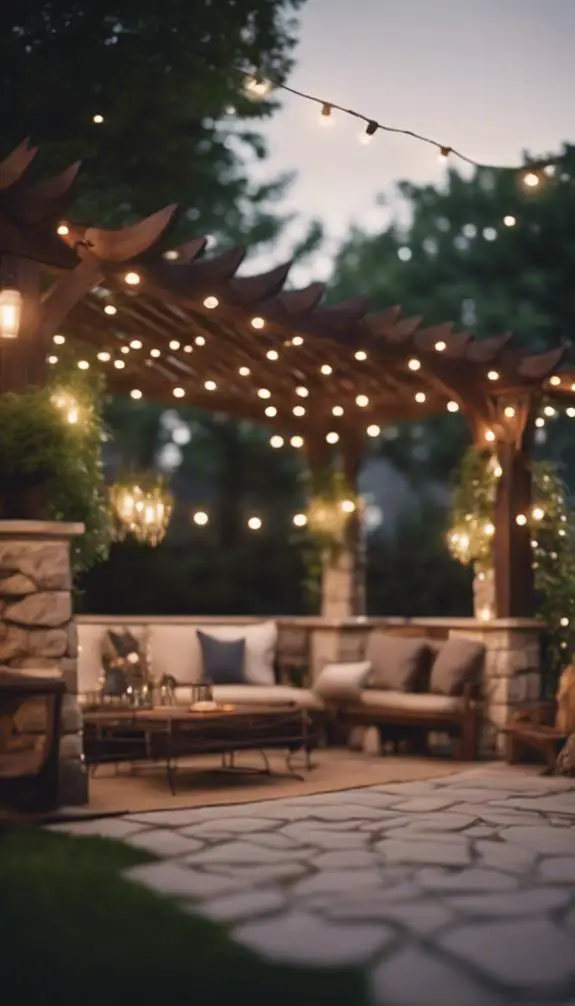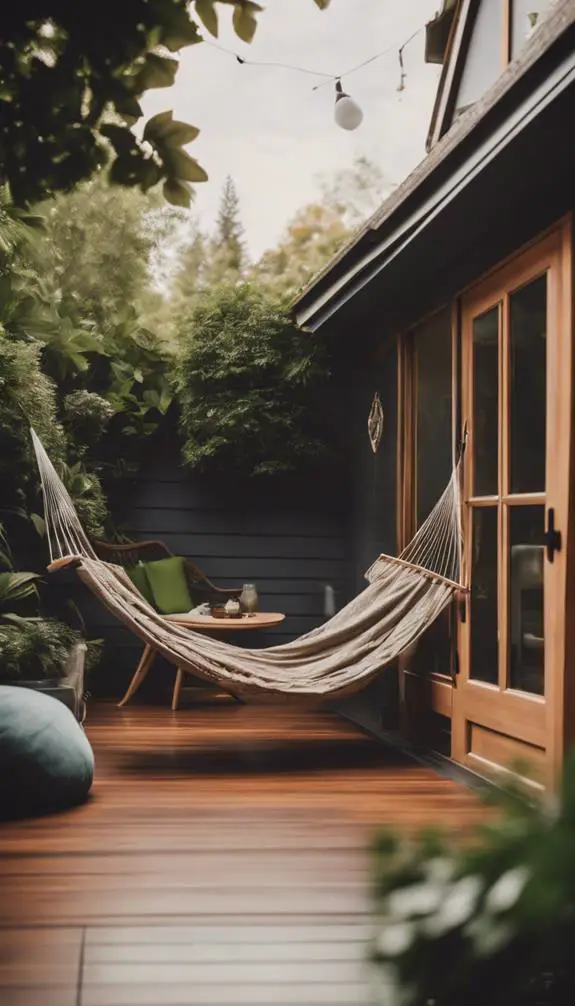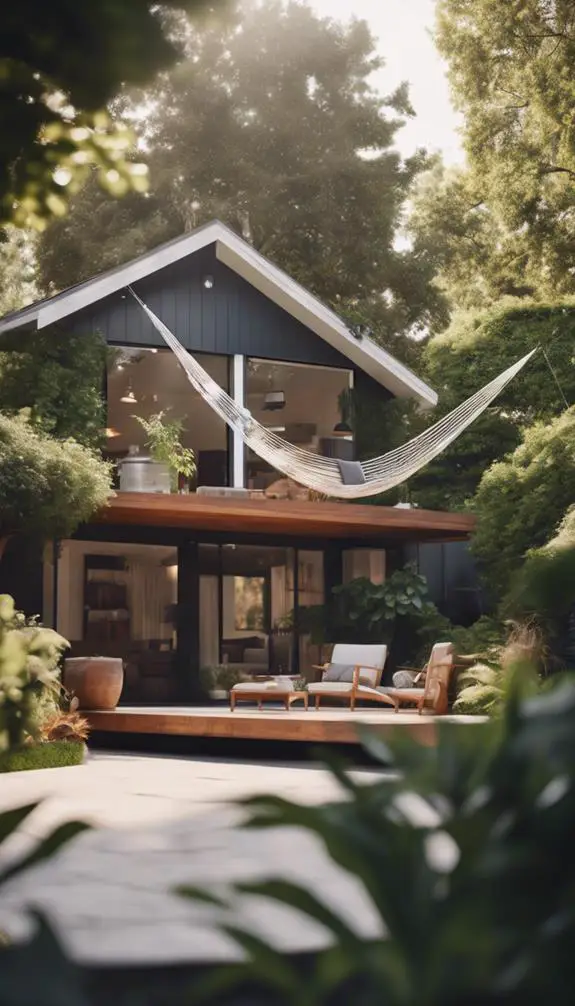As you start planning your backyard ADU, you're likely wondering how to turn this blank canvas into a functional and stylish space that complements your existing home. You've got a vision for a cozy retreat or a modern guest house, but where do you even begin? By considering the daily habits and routines of the occupants, you can create a layout that flows seamlessly and maximizes every square foot. But what are the must-haves for a successful design, and how can you balance functionality with aesthetics?
Summary
- Identify the purpose of the ADU to determine required square footage, layout, and features, ensuring it aligns with your needs.
- Weigh site constraints, neighborhood regulations, and existing structures to select the ideal ADU location and maximize its potential.
- Incorporate daylight harvesting techniques, strategically placed windows, and reflective surfaces to bring in natural light and reduce artificial lighting needs.
- Optimize the floor plan with space-saving appliances, foldable tables, and wall-mounted shelves to create a functional and visually appealing space.
- Select sustainable materials, consider repurposing materials from the existing home, and incorporate eco-friendly design elements to reduce the ADU's environmental footprint.
Defining Your ADU Needs

Frequently, homeowners venture on an ADU project without fully understanding their needs, leading to costly mistakes and design flaws.
To avoid this, you must define the purpose of your ADU. What do you want to achieve with this additional space? Is it for a home office, guest house, or in-law suite?
Identifying the ADU's purpose helps you determine the required square footage, layout, and features. Conduct a lifestyle assessment to understand your daily habits, preferences, and routines.
This will help you visualize how you'll use the ADU and guarantee it aligns with your needs. By doing so, you'll create a functional and efficient space that complements your existing home and enhances your quality of life.
Choosing the Right Location
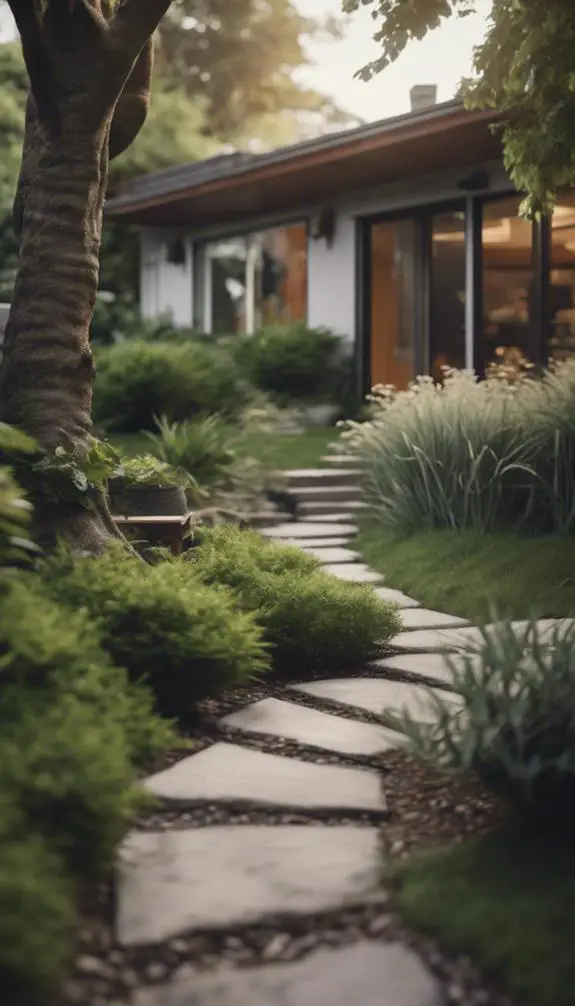
Behind your existing home lies a world of possibilities for your ADU's location.
As you weigh your options, consider the site constraints that may impact your design. Take note of the natural slope of your yard, existing trees, and any existing structures like sheds or decks.
These elements can either enhance or hinder your ADU's placement. Additionally, familiarize yourself with neighborhood regulations that may dictate setbacks, height restrictions, and other zoning requirements.
Understanding these constraints will help you identify the ideal location for your ADU, ensuring a seamless integration with your existing property. By carefully evaluating these factors, you'll be able to maximize your ADU's potential and create a harmonious backyard oasis.
Selecting the Ideal Floor Plan
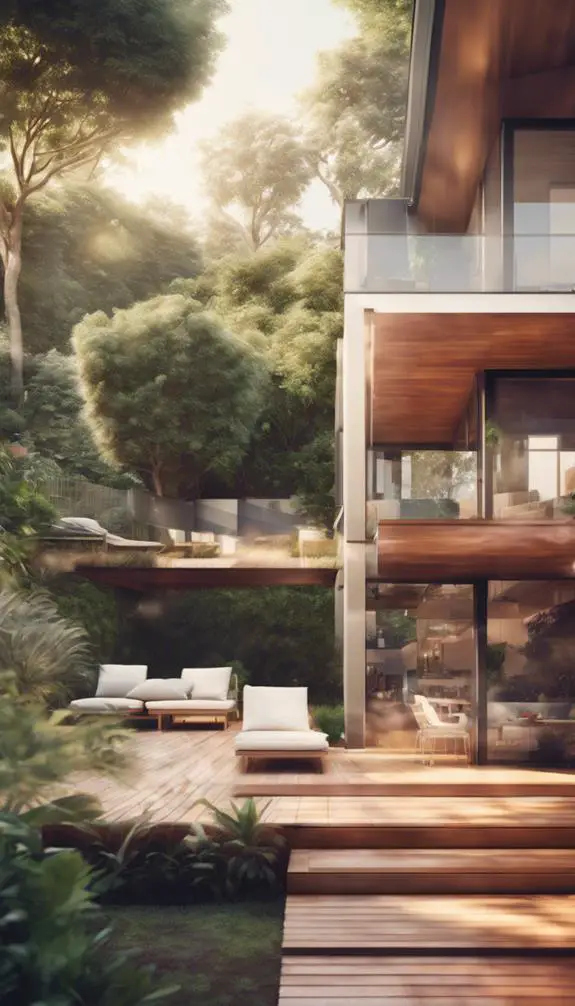
With your ideal ADU location identified, you're ready to focus on the interior layout.
Now, it's time to select a floor plan that suits your needs. Consider the activities you'll be doing in your ADU and how you'll move through the space.
Think about the flow and functionality you need. Do you require a home office or a cozy reading nook? Perhaps you need a full kitchen or a spacious living area.
The key is to achieve floor plan flexibility, allowing you to adapt the space as your needs change. With ADU customization, you can create a layout that reflects your unique style and priorities.
Maximizing Natural Light Sources
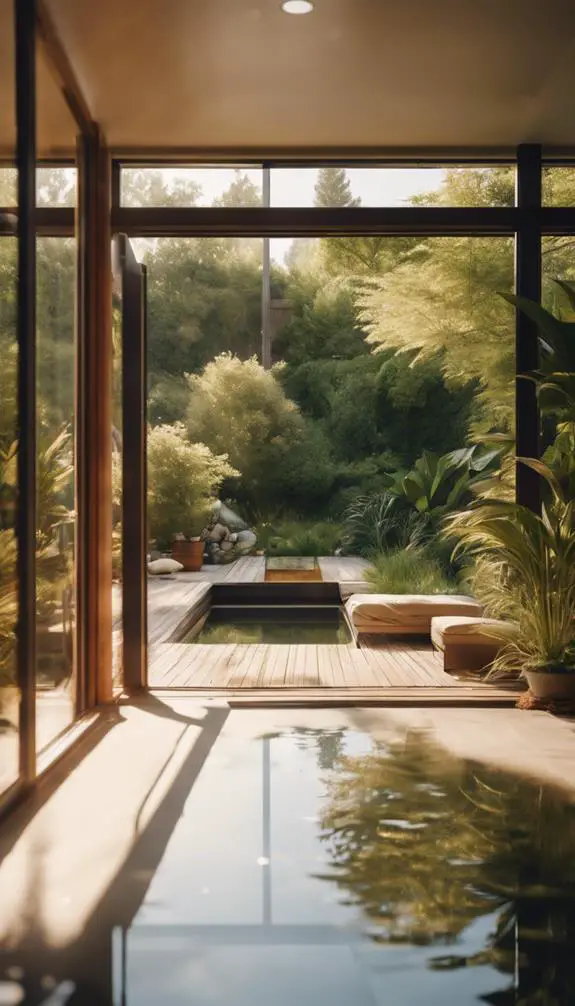
As you step into your ADU, natural light pours in, illuminating the space and lifting your mood.
To maximize this effect, consider incorporating daylight harvesting techniques into your design. This involves strategically placing windows, skylights, and reflective surfaces to redirect natural light deep into the space.
Skylight installation, in particular, can be an effective way to bring in natural light, especially in areas with limited wall space. By carefully calculating the size and placement of skylights, you can create a bright, airy atmosphere that reduces the need for artificial lighting.
Additionally, consider using light-colored interior finishes and minimizing obstructions to certify natural light can flow freely throughout your ADU.
Compact Kitchen Design Ideas
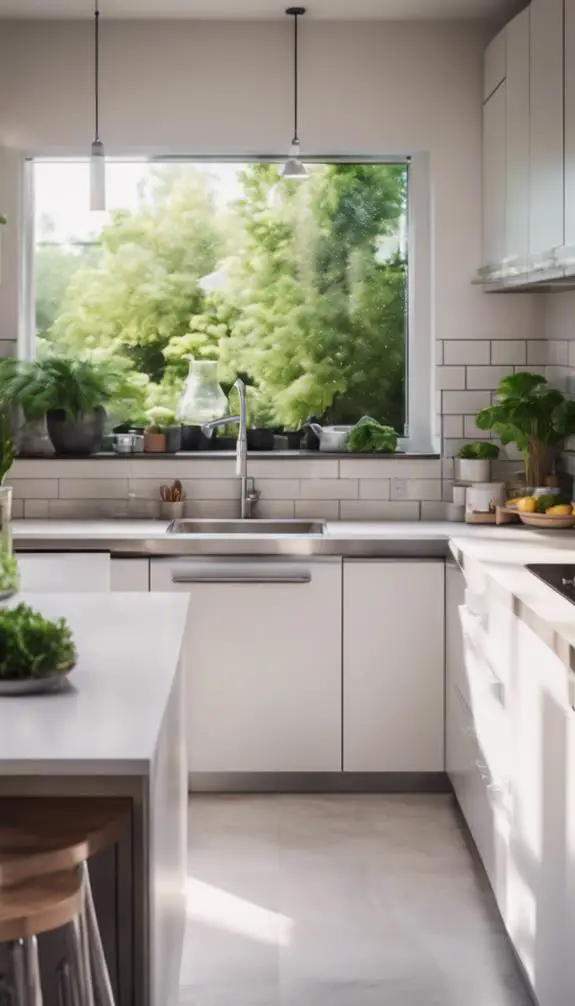
You'll need to strategically select space-saving appliances that won't compromise on functionality, such as compact refrigerators, microwave-toaster oven combos, and slim dishwashers.
Optimizing counter space is also vital, so consider installing foldable tables, wall-mounted shelves, and retractable cooktops to keep your kitchen clutter-free.
Space-Saving Appliances
Beyond the perimeter of your backyard ADU, compact kitchen design ideas come into play, particularly when selecting space-saving appliances that optimize functionality without sacrificing style.
You'll want to weigh appliances with streamlined profiles, such as slim refrigerators and compact dishwashers. When it comes to your adu layout, think vertically – install wall-mounted appliances or opt for under-counter models to free up floor space.
To maintain a sense of openness, choose appliances with sleek, minimalist designs that complement your adu decor. By doing so, you'll create a kitchen that's both functional and visually appealing, perfect for your backyard ADU.
Optimizing Counter Space
Efficiently allocating counter space in your backyard ADU's kitchen is crucial for maintaining a sense of openness and functionality.
By doing so, you'll create a seamless workflow and maximize storage. Begin by selecting the right countertop materials that fit your style and budget.
Consider durable, low-maintenance options like quartz or recycled glass. Next, optimize your corner cabinets by incorporating carousel shelves or lazy susans.
These clever solutions allow you to access items easily, eliminating clutter and wasted space. Additionally, install a wall-mounted pot rack or utensil holder to free up counter space.
Space-Saving Storage Solutions

You'll maximize your ADU's functionality by optimizing vertical space, installing shelves, cabinets, and storage units that reach the ceiling, and making the most of every nook and cranny.
Consider incorporating hidden storage compartments, such as sliding panels, secret drawers, and recessed shelving, to keep clutter out of sight. By doing so, you'll create a sense of openness and visual calm, even in the smallest of spaces.
Optimize Vertical Space
Three walls of your backyard ADU design are ripe for the installation of space-saving storage solutions, maximizing the often-wasted vertical space.
You can transform these areas into functional and visually appealing features. Consider integrating vertical gardens, which not only provide additional storage but also bring in a touch of greenery to your space.
Vertical accents, such as floor-to-ceiling shelving or decorative wall panels, can also be used to create the illusion of more space while keeping your belongings organized.
Hidden Storage Compartments
Ingenious hidden storage compartments can be seamlessly integrated into your backyard ADU design, providing a clever solution for stashing away items you don't want cluttering your living space.
You can incorporate secret shelves behind sliding panels or hidden cabinets within furniture pieces, keeping clutter at bay while maintaining a sleek aesthetic.
Consider installing floor-to-ceiling storage units with retractable doors, allowing you to access items while keeping them out of sight.
By incorporating these space-saving solutions, you'll create a clutter-free living environment that's both functional and visually appealing.
With careful planning, your backyard ADU can become a haven of organization and style.
Functional Bathroom Layouts

As you plan your backyard ADU's bathroom, every square foot counts, and a functional layout is essential to create a sense of spaciousness.
A wet room design, where the shower floor is level with the rest of the bathroom, can create a seamless look and make the space feel larger. Consider a double sink vanity to increase functionality and create a luxurious feel.
Position the sink and toilet along a single wall to create a clear path through the bathroom. A wall-mounted toilet can help create the illusion of more floor space.
Incorporating Sustainable Materials
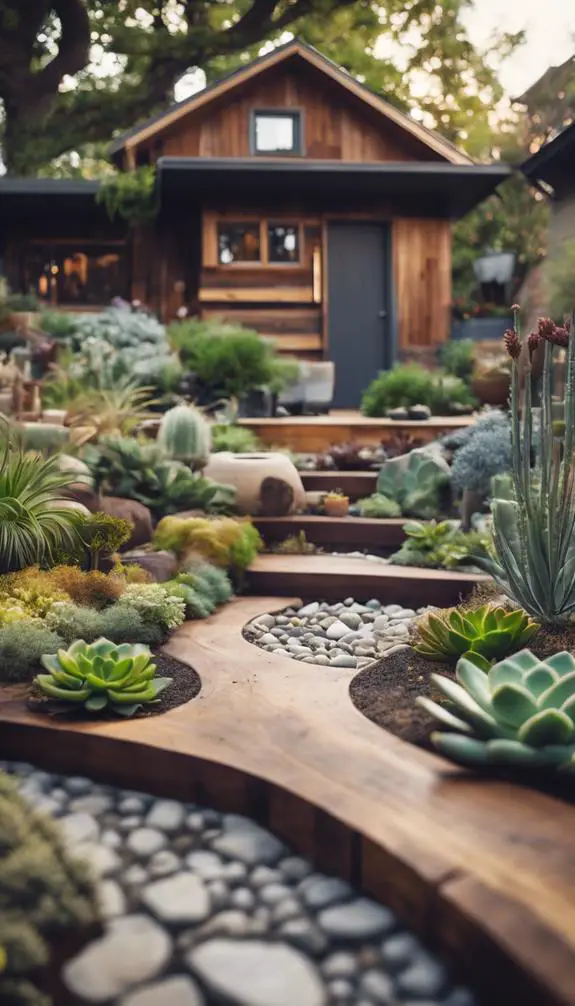
Selecting sustainable materials for your backyard ADU's construction can substantially reduce its environmental footprint.
You'll want to weigh eco-friendly roofing options like solar panels, green roofs, or recycled metal roofing. These alternatives not only minimize waste but also provide insulation and reduce energy consumption.
When it comes to walls and floors, opt for recycled materials like reclaimed wood, bamboo, or low-VOC (volatile organic compound) paints. These choices will markedly diminish the carbon footprint of your ADU.
Additionally, repurpose materials from your existing home or salvage yards to reduce waste and add a touch of uniqueness to your design. By incorporating sustainable materials, you'll create a harmonious and eco-conscious living space that benefits both you and the environment.
Blending With Existing Architecture
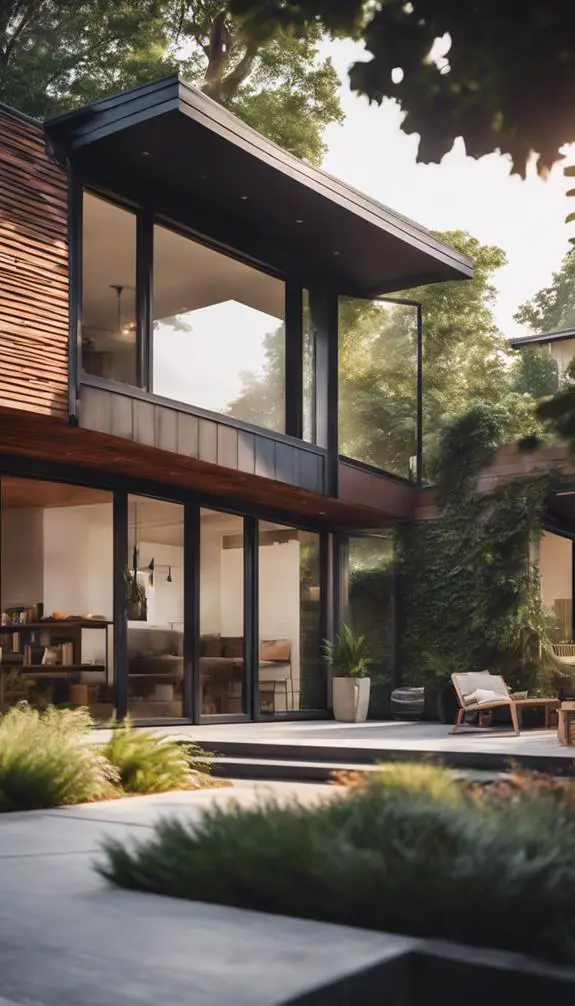
When designing your backyard ADU, it's essential to think about the existing architecture of your primary residence and surrounding landscape.
You want to achieve architectural harmony, where your ADU complements the main house's style, scale, and materials. Visual cohesion is key, so consider the color palette, textures, and rooflines of your primary residence when selecting materials and designing your ADU.
By doing so, you'll create a seamless visual flow between the two structures. Think about the landscape too – how will your ADU interact with the surrounding trees, gardens, and hardscapes?
Creating a Seamless Transition

As you design your backyard ADU, you'll want to create a seamless shift between indoor and outdoor spaces by blending the two through similar materials and color schemes.
Matching the architectural style of your main house will also help to unify the visual flow, creating a cohesive look. By doing so, you'll be able to create a harmonious connection between the two spaces, making the passage from one to the other feel natural and effortless.
Blend Indoor and Outdoor
Three essential elements – line of sight, material continuity, and functional flow – come together to create a seamless shift between your backyard ADU's indoor and outdoor spaces.
You can achieve this by positioning windows and sliding glass doors to capture nature views, blurring the line between indoor and outdoor ambiance.
Choose materials that complement both environments, such as natural wood or stone, to create a sense of cohesion.
Guarantee a smooth functional flow by designing your layout to encourage effortless passages between spaces. By doing so, you'll create a harmonious flow that extends your living space beyond the confines of your ADU's walls.
Match Architectural Style
In tandem with your primary residence, your backyard ADU's architectural style should harmonize to create a cohesive visual language.
This means echoing the primary home's design elements, such as rooflines, window styles, and exterior materials, to create a sense of style cohesion.
By doing so, you'll create a seamless shift between the two structures.
Incorporate architectural nods, like matching roof pitches or mirroring facade details, to visually tie the ADU to the main house.
This thoughtful approach guarantees a harmonious relationship between the two buildings, enhancing the overall aesthetic appeal of your property.
Unified Visual Flow
By harmonizing your backyard ADU's architectural style with your primary residence, you've set the stage for a cohesive visual language.
Now, focus on creating a unified visual flow by strategically balancing design elements. Establish a clear visual hierarchy by using size, color, and texture to guide the eye through the space.
Consider the ADU's massing, proportion, and orientation in relation to the main house and surrounding landscape. Balance bold statements, like statement roofs or accent walls, with quieter elements, such as neutral-colored surfaces or lush greenery.
Outdoor Space Integration Ideas
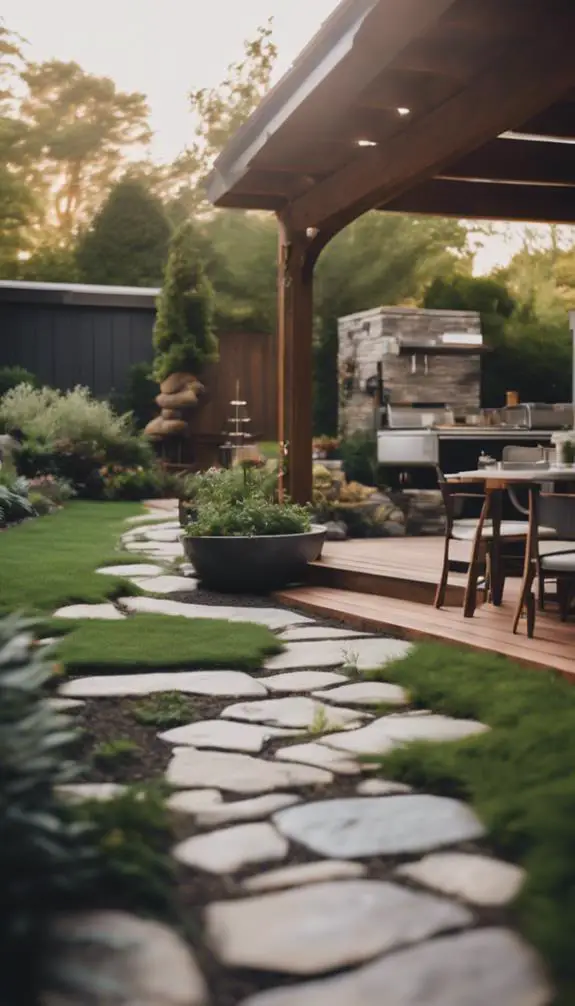
Step into your backyard and envision a seamless shift between your outdoor space and your ADU (Accessory Dwelling Unit).
To achieve this, consider integrating your outdoor space with your ADU through clever design elements. Create an outdoor oasis by incorporating natural materials, textures, and colors that blend with the surrounding landscape.
Use large windows, sliding glass doors, or accordion doors to blur the lines between indoors and outdoors. This seamless expansion will create a sense of continuity, making your ADU feel like a natural extension of your outdoor space.
Budget-Friendly Design Tricks

As you finalize your ADU design, budget constraints may start to weigh on your creative vision.
Fear not, because incorporating budget-friendly design tricks can help you achieve your desired ADU lifestyle without breaking the bank. Consider repurposing materials, such as using reclaimed wood for accent walls or upcycling old furniture for unique decorative pieces.
You can also create an Outdoor Oasis by incorporating low-maintenance plants, using cost-effective outdoor lighting, and opting for multi-functional furniture.
Additionally, maximize natural light by strategically placing windows and skylights, reducing the need for artificial lighting.
FAQs
Can I Rent Out My ADU to Short-Term Vacation Renters?
You can rent out your unit to short-term vacation renters, but you'll need to research local regulations and guarantee you have proper insurance options to mitigate risks, as vacation rentals come with unique liabilities.
Do I Need a Separate Utility Hookup for My Adu?
You'll likely need a separate utility hookup for your accessory dwelling unit (ADU), which typically requires a new meter installation, allowing you to track and manage utility costs independently, ensuring accurate billing and optimized resource allocation.
How Do I Handle Potential Noise Complaints From Neighbors?
You'll need to implement soundproofing methods, like acoustic insulation and sealing gaps, to minimize noise transmission. Additionally, consider noise mitigation strategies, such as sound-absorbing materials and strategic unit placement, to reduce the likelihood of complaints from nearby residents.
Are There Any Specific Zoning Laws for Backyard Adus?
When exploring zoning laws, you'll find that setback requirements and building permits are vital. You'll need to guarantee your structure complies with local ordinances, securing necessary permits before breaking ground to avoid costly revisions or even project cancellation.
Can I Build an ADU for a Family Member With Disabilities?
You can design an accessible dwelling unit for a family member with disabilities, incorporating features like wheelchair ramps, wide doorways, and adaptable bathrooms, to create a comfortable living space that accommodates their specific needs.
Conclusion
By incorporating your unique needs and lifestyle into the design process, you'll create a backyard ADU that seamlessly integrates with your existing home. With a thoughtful approach to location, floor plan, and natural light, you'll maximize functionality and style. Compact design elements, sustainable materials, and harmonious visuals will come together to create a cohesive, eco-conscious space that enhances your quality of life.


